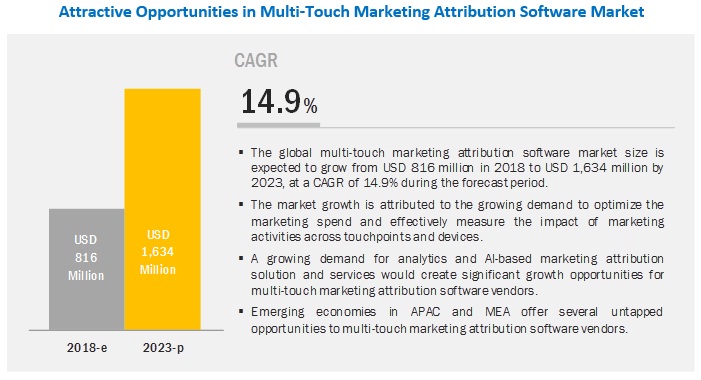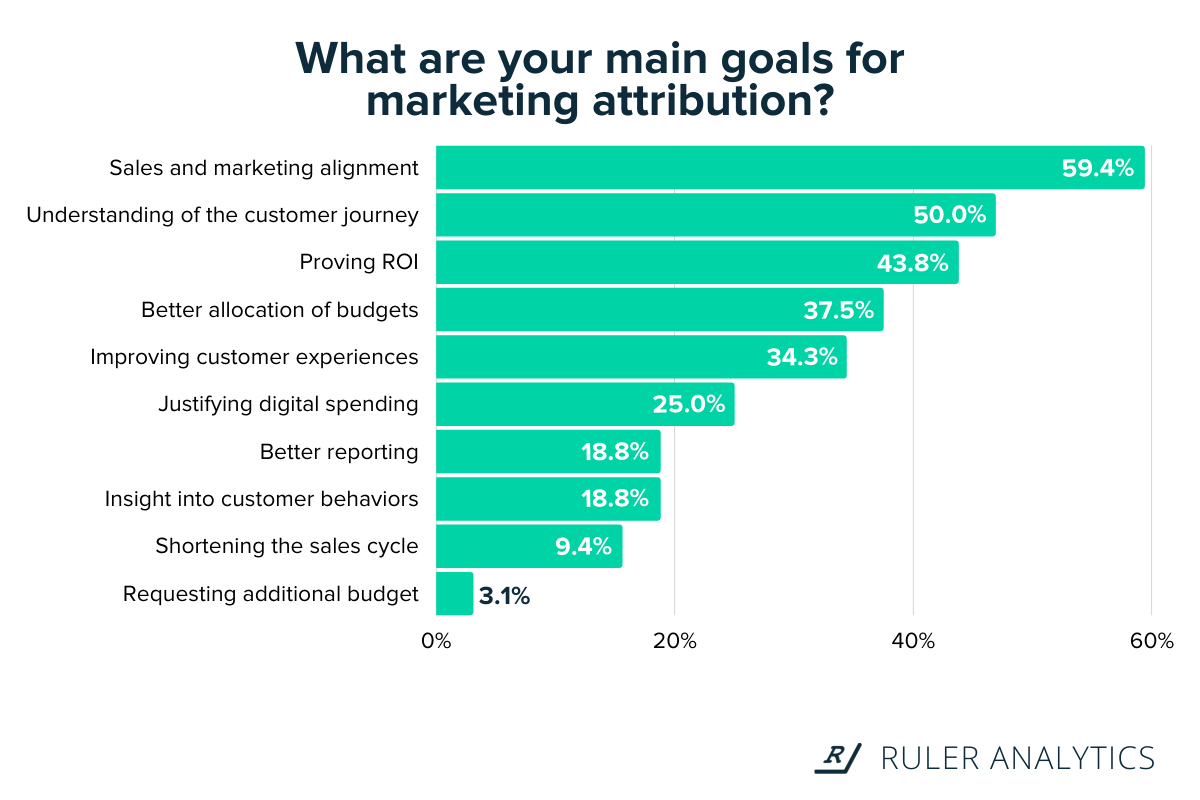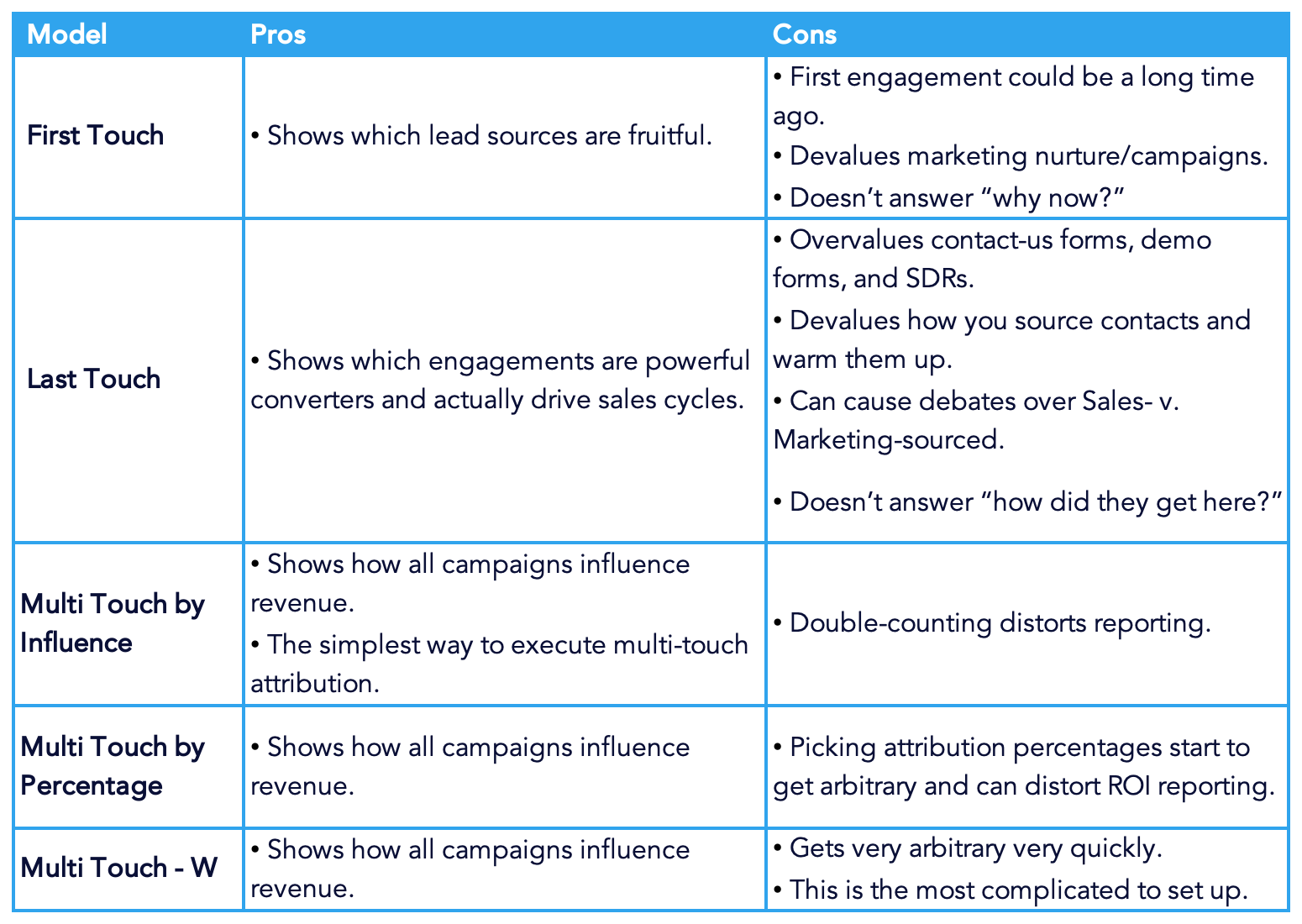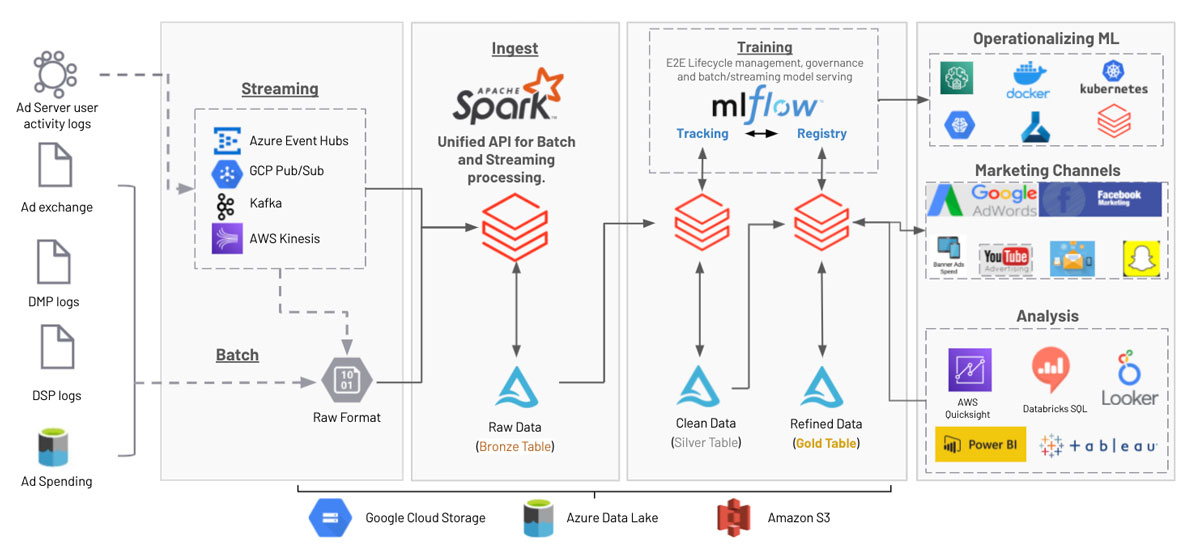Ah..the excitement of seeing our campaigns drive new leads and opportunities. There's nothing quite like the rush of seeing our creative efforts pay off through fresh pipeline.
But in today's multichannel marketing reality, understanding exactly which efforts truly drive results has become incredibly challenging. Are your emails working harder than your paid ads? How influential is that latest webinar you hosted compared to your organic social posts? As more touchpoints get added to the buyer's journey, attribution gets complex quickly.

I've become such an avid fan of multitouch attribution models. Why?? Because it brings clarity to the customer journey that is so fundamental yet elusive. My own marketing strategy was totally transformed by adopting a strict attribution strategy. I went from flying blind on budget decisions to having clear attribution-driven insights to optimize my spending.
In this post, I'll share the essentials of multitouch attribution and how you can start leveraging it through your marketing automation platform. I'll also sprinkle in examples from my own experience on what's worked well (and what hasn't!). My goal is for you to walk away with knowledge you can apply directly to improve your marketing performance.

What is Multi-Touch Attribution?
Multitouch attribution refers to the process of assigning credit to each touchpoint or interaction that leads to a desired conversion. The goal is to understand the influence that different touchpoints have at various stages of the buyer's journey.
Some key characteristics of multitouch attribution models:
- Multiple Interactions: Considers the impact of multiple touchpoints (ads, emails, page visits etc.) on a conversion, not just the last click or interaction.
- Weighted Distribution: Assigns varying credit or weights to each touchpoint based on attribution logic. Not all touchpoints get equal credit.
- Algorithms: Uses statistical modeling and attribution algorithms to determine optimal weights.
- Channel Agnostic: Evaluates impact across different online and offline channels in an integrated way.
This is a more comprehensive approach than last-click attribution which assigns 100% credit to the final touchpoint before a conversion. Last-click fails to account for influence of earlier interactions.
Multitouch attribution provides a more nuanced understanding of how different activities work together to drive conversions over time.

Why Multi-Touch Attribution Matters for Marketing Automation
Marketing automation platforms like HubSpot and Marketo have made multitouch attribution more accessible to marketers. But why does it matter?

Here are some key reasons multitouch attribution is valuable for marketing automation users:
1. Optimize Spending Across Channels
Multitouch data reveals the channels and campaigns that are driving conversions. This allows you to shift budget towards high performing channels and prune activities with lower ROI. Marketers using last-click models often over-estimate the value of certain costlier channels like paid search. Multitouch models provide a fact-based way to optimize spending.
2. Improve Campaign Strategy
Seeing the touchpoint path to conversion helps you identify gaps in your customer journey. For example, you may find that a webinar is influencing sales at the middle of the funnel. This insight allows you to develop more webinar content to engage such accounts. Attribution acts as a roadmap for designing effective nurture campaigns across the funnel.
3. Track Campaign Impact Over Time
Customers go through an extended journey before converting. Multitouch attribution helps you analyze how campaigns perform over days or weeks, not just immediately after sending. This longitudinal visibility into nurture performance allows automation to be refined continuously.
4. Account-Based Insights
For ABM programs, multitouch attribution can reveal touchpoint influence at an account level. You can see engagement with different personas and tailor account-based plays accordingly. These insights help orchestrate multichannel ABM more effectively.
In summary, having clear visibility into the customer journey and touchpoint contribution helps marketing automation realize its full potential. Multitouch attribution provides the foundation for data-driven optimization.

Implementing Multi-Touch Attribution Models

Now that we've covered why multitouch attribution matters, let's look at how marketing automation users can implement it for maximum impact. Here are some tips:
Choose the Right Model
There are several models to choose from when setting up multitouch attribution.
- First Touch: Gives full credit to the first touchpoint. Good for early brand interactions.
- Last Touch: Assigns full credit to final touchpoint. Widely used but flawed.
- Linear: Evenly distributes credit across all touchpoints. Simple but not very insightful.
- Time Decay: Earlier interactions get less credit. Recency is important.
- Position-Based: Distributes credit based on stage of the journey. Common models are 40/40/20 for early/middle/late stages.
Evaluate your customer journey patterns and goals to pick the right model. Marketers can also use algorithmic models like Markov chains which use machine learning to determine optimal attribution.

Tag Touchpoints for Tracking
Use UTM campaign tagging consistently across channels to track key touchpoints like email sends, ad clicks, page visits, form fills etc. This tagging should feed into the marketing automation platform for attribution analysis. Integrate offline channels using unique campaign codes.
Identify Key Segments
Attribution insights can vary across customer segments and personas. For example, long sales cycle segments are more influenced by early-stage content vs. SMBs that convert quicker. Build attribution models for key segments to get persona-level visibility.
Visualize the Journey
Leverage attribution visualization tools to see the average conversion path and touchpoint influence for different segments. Tools like Google Analytics provide clear attribution flowcharts. Reviewing the visual journey gives intuition around campaign effectiveness.
Act on Insights
This is critical. Attribution models provide actionable insights on channel influence and journey gaps. Actually optimize campaigns and spending based on the insights. Avoid vanity metrics that look directionally right but don't drive decisions.
Test and Iterate
Continuously test new attribution models and weighting logic to improve accuracy. Especially refine approaches for your most valuable segments. Attribution is not a set-it-and-forget-it exercise but requires ongoing iterations.

Driving Growth with Multi-Touch Attribution
To demonstrate the power of multitouch attribution, here is an example from one of our clients - a SaaS company selling to enterprise IT customers.
They had been optimizing campaigns using a last-click model. When they implemented an algorithmic attribution approach, some key insights emerged:
- Paid search was getting too much credit before, proving less influential than expected
- Early-stage nurture was far more valuable in driving progression than they realized before
- Industry whitepapers were influential at the final stage before close
Based on this, they were able to shift budget from paid search to expand their nurture programs and content creation. Within a quarter, they saw lead volume increase 34%, while cost per lead dropped 18%.
This example illustrates the ROI potential from attribution analytics. Rather than guesswork, data-driven touchpoint intelligence allows marketing automation to become truly optimization driven.

Key Takeaways
Here are the core lessons on maximizing value from multitouch attribution for marketing automation:
- Multi-touch attribution analyzes influence across touchpoints, not just last click
- It provides essential visibility into the true driver of conversions
- Aligning campaigns to the customer journey improves results
- Attribution identifies optimization opportunities across channels
- Continuous iteration on models and logic is key for growth
Marketing automation coupled with multitouch attribution provides robust optimization capabilities for modern B2B marketing. With the proliferation of channels and iterations required in the buyer's journey, measurement capabilities like multitouch attribution will only grow in importance.
Focusing on this capability now will allow forward-thinking marketers to gain a competitive edge from their automation investment.
Hopefully, this article provided a comprehensive overview of multitouch attribution models and how they can be leveraged for growth. What are you seeing in terms of attribution approach and opportunities?
FAQ
1. What are the main differences between single touch attribution vs multi-touch attribution?
Single touch attribution, also known as last-click attribution, assigns 100% credit to only one touchpoint - usually the last click or touchpoint prior to conversion. This fails to account for influence of multiple touchpoints earlier in the buyer's journey.
Multi-touch attribution, on the other hand, analyzes how each interaction along the customer journey (ads, emails, page visits, etc) contributes to driving conversions. It uses statistical models to distribute credit across multiple touchpoints based on channel influence insights. This provides a more accurate picture of marketing impact by considering the entire journey.
2. What are some examples of attribution models and how do they differ?
Some popular attribution models include:
First Touch: Gives full credit to the first interaction in the journey. This values early brand awareness but underweights late-stage influence.
Last Touch: Full credit to the final click before conversion. This is easy to understand but flawed in not accounting for early influence.
Linear: Distributes credit evenly across all touchpoints. Simple to implement but not very insightful.
Time Decay: Earlier interactions get less credit, more weight to recent ones. Captures recency but complex to implement.
Algorithmic: Uses statistical modeling and machine learning to determine optimal weights. Most accurate but requires advanced analytics capabilities.
Choosing the right model depends on marketing objectives, data sophistication, and customer journey patterns. Testing different models against historical data is recommended.
3. How can marketers use multi-touch attribution to optimize spending?
Multi-touch insights clearly show the influence of different marketing channels on conversion events. Channels driving a lot of sales with minimal investment can be identified. Marketers can use this visibility to shift budget away from overvalued channels like paid search towards high ROI channels like organic and referral traffic. Resources are aligned to what truly impacts customer actions.
Continuous optimization of spending and bid adjustments based on attribution analytics improves marketing performance over time.
4. How does multi-touch attribution help account-based marketing (ABM) programs?
For ABM, multi-touch attribution provides insights at an account level vs just aggregate-level. You can analyze engagement across personas and channels for targeted accounts. This helps tailor the account-based marketing mix to what resonates best with each account.
For example, you may find seminar attendance has high influence on converting IT DM accounts while case studies work better for engineering-led accounts. These persona and account-specific insights allow orchestration of multi-channel ABM campaigns customized to each target.
5. What kind of data and tagging is required to implement multi-touch attribution?
Robust tagging of campaigns and touchpoints is essential for capturing interactions that feed the attribution model. UTM campaign parameters should be added to links. Unique IDs need to tag emails, ads, landing pages, etc. This tagging needs to be consistent across channels so that the data flows into the analytics platform. CRM data and offline channel codes may need to be integrated as well.
Without proper tagging to connect touchpoints to users, the attribution model will not work. Tagging takes work but delivers a high ROI.
6. How can marketers use multi-touch attribution to improve campaign strategy?
The customer journey revealed by multi-touch attribution shows where the gaps and opportunities are to better nurture and convert accounts. For example, if early stage nurture content is highly influential, you can expand webinars, guides, and other educational assets to engage more accounts. Seeing weak points allows strengthening of specific funnel stages.
Journey analytics also help schedule and sequence the right campaigns for different lifecycle stages for optimal impact. Attribution provides an almost x-ray view of the customer journey to inform strategy.
7. What are some best practices when implementing multi-touch attribution?
Some best practices include building models for key segments rather than just aggregate data to get persona-level insights. Focus on actionable metrics vs vanity metrics. Optimize for what matters. Visualize attribution journeys for better intuition and insights. Have regular reviews and refresh model logic to improve accuracy. Align stakeholders on goals and have buy-in for acting on attribution insights. Tag rigorously across channels and fix any data gaps. Your model is only as good as the input data. Use algorithmic models once fundamentals are in place for advanced optimization.
8. How can marketers visualize multi-touch attribution to better understand the customer journey?
Platforms like Google Analytics provide attribution modeling capabilities and visual flowcharts of the conversion path. Reviewing these visual journeys shows where opportunities for additional nurture lie and what communication channels influence accounts at different stages. The flowchart makes it easy to identify weaknesses in the buyer's journey and strengthen campaign strategy accordingly. Visual data discovery leads to "aha" moments.
Other simple but effective visuals include bar graphs of channel influence and bubble charts of attribution touchpoint weights. Keeping it visual is key.
9. What are some challenges or pitfalls to avoid with multi-touch attribution?
A few key challenges to anticipate are incomplete tagging leading to inaccurate model inputs so tag rigorously; choosing the wrong model that doesn't fit the customer journey so test models thoroughly; not having the analytics capabilities to capture and analyze multi-touch data so know your tech stack; focusing on vanity metrics that don't drive decisions so stay action-oriented; changes in channels, journeys, products can reduce model accuracy over time so review and refresh models frequently.
Multi-touch attribution done right drives significant value but requires cross-team commitment, analytics maturity and continuous iterations.
10. How can marketers measure the ROI from implementing multi-touch attribution?
Some metrics to track the value of multi-touch attribution include: Increase in conversion rates from better targeting and optimization; Improvement in cost per lead or acquisition from budget shifts to high ROI channels; Lift in revenue from campaigns optimized based on attribution insights; Reduction in wasted spend on channels with lower influence; Increase in marketing return on investment (ROI) metric.
Dashboards tracking these metrics over time quantify the business impact of multi-touch attribution. Value should be measured on revenue influence, not just model accuracy.






